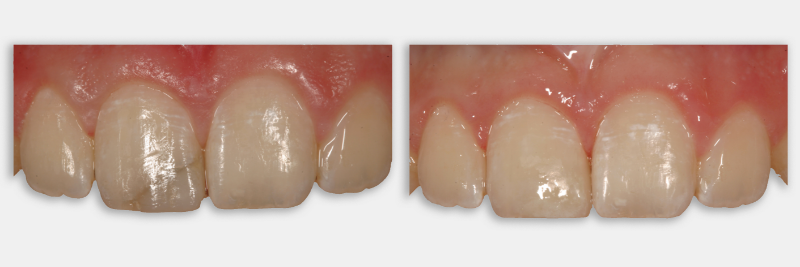Direct vs. Indirect Restorations for a Maxillary Central Incisor
By Robert Winter on November 20, 2019 |
The most challenging tooth to restore for a patient is the maxillary central incisor. Choosing a direct or indirect restoration depends on several factors.
The first is the financial impact for the patient. A direct restoration is generally less expensive than an indirect restoration because it can be completed in one appointment and there are no laboratory fees.
Second, direct composite is generally suited for more conservative restorations, though the entire facial can be restored if a veneer is indicated. One of the most important considerations should be the predictability of matching the appearance of the adjacent central incisor.
If there is a restorative option, which is generally predicated on the structural integrity of the tooth, a direct composite restoration will result in a better esthetic match verses an indirect veneer.
[SPEAR ONLINE PATHWAY: In “Excellence in Anterior Composite Restorations,” Dr. Marcos Vargas provides a two-part overview of the science behind composite materials and explains how to create beautiful anterior restorations for circumstances traditionally considered beyond the capabilities of composite resin.]
When applying composite to the tooth, the color and value match can be checked immediately. Layering of the composite with dentin and enamel in addition to placing internal effects is necessary to match the adjacent tooth.
A similar process is required when fabricating an indirect veneer restoration, but the outcome cannot be accurately evaluated by the technician. The prepped tooth appearance cannot be replicated in the laboratory, the adjacent tooth is not present to assist in matching and the resin cement may influence the final appearance after the veneer is bonded onto the tooth.
Photographs of the prepped and adjacent tooth provide a great deal of information to the technician, but the indirect restoration on the stone die does not mimic what the dentist sees when layering composite directly while the patient is in the chair.
The only veneer I would consider for a single indirect central restoration is an extensive preparation depth of 0.8 – 1.0 – 1.2 mm from gingival to incisal third.
This depth would minimize or eliminate the effects of the tooth and resin cement, therefore increasing the predictability of the outcome. A significant disadvantage of prepping a tooth this way is that you may eliminate a significant amount, if not all, of the enamel on the tooth.
In general, a direct composite restoration to match a central incisor is more predictable, more conservative and more affordable. The layering skills when placing the composite now become critical to achieving the desired esthetic outcome.
Robert Winter, D.D.S., is a member of Spear Resident Faculty.